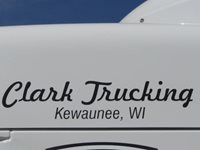Efficiency vs. Max Production
My grandfather was a warehouseman. My father and my uncle were warehousemen. My brothers were

warehousemen. My cousins were warehousemen. In a trucking family, discussions are probably about the trucking industry. In my family we talked about warehousing and distribution. I was the youngest. It was my role to shut up and listen. I could ask a question, but that was about it. I was there to learn.
One of the lessons that I learned was the 70% rule. As many a youngster I thought profitability was about maximizing productivity. They taught me that the net profit was more important than the gross earnings. Warehouses operate most efficiently at about 70% of capacity. Anything over that decreases efficiency. A product that was moved once may now have to be moved again so that you can put newer stock behind it. The fewer times a product is moved the more profitable the warehouse.

If you tighten up the spaces you risk damage. The warehouse that I worked in handled liquor. The product was distributed on standard 40 x 48 pallets. That is the standard pallet and is 13.2 square feet and has 4 way entry. The easiest entry is from the front. Turning pallets to save space makes handling more difficult. A truckload was 18 pallets. We could safely stack 3 pallets high. We set up our rows to be about 28 feet long and 4 feet wide. Then we taped off about 6 inches between the rows. That allowed for overhang. We could safely, easily and profitably move pallets out of these rows.
Then we got a new warehouse manager. He wanted to increase the gross by putting the stacks closer together. We tried to explain to him why we did it the way we were doing it. It was his belief that if we tightened up on the existing accounts that we could get another account into the same space. He was right. We could fit more product into the same space. The problem was that increased handling costs outweighed the increase in revenue.
The percentage changes from industry to industry or even within the industry. The principle remains the same. If a NASCAR driver ran at 70% of capacity he would get lapped, probably within the first 5 laps. By the same token if he does not modify his aversion to risk at the start of the race he many not finish the race. Even in warehousing if a product is going to be warehoused and not moved for a long period of time the percentage of capacity can increase.
The same principles apply to trucking. If you have a one day run and need to drive 11 hours to make th

e run, you are taking a risk. If you miss your appointment, you may lose a day of productivity or a customer. If you budget a 10 hour drive for one day, you have less risk of missing your appointment. On a longer run, you can run a higher percentage of your max. On a one day 10 hour run you might run the risk of delay due to weather, traffic, or construction. On a 3 day 30 hour run your risk lessens. The smart driver will try to push on toward the 11 hour mark on the first 2 days and leave maybe 9 hours for the last day. Thus avoiding the urge to speed up and increase fuel costs.
Each of our operations is different. I can’t or won’t tell you how to run yours. We all want to increase our net profit. That doesn’t change from my operation to yours. It is each of us to decide how to maximize our profitability. Just remember when increasing your gross revenues to ask yourself is this going to make me more profitable?